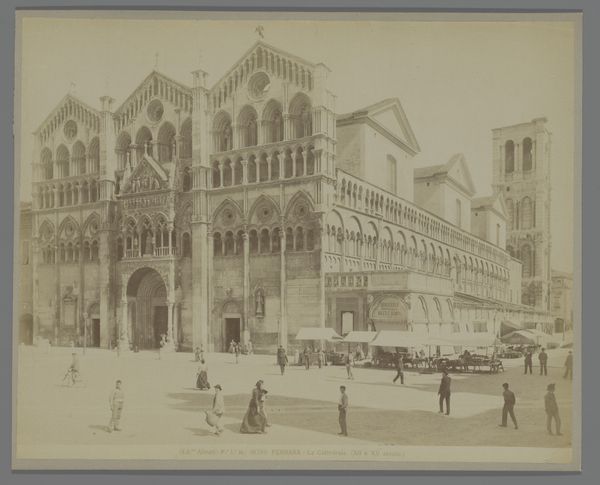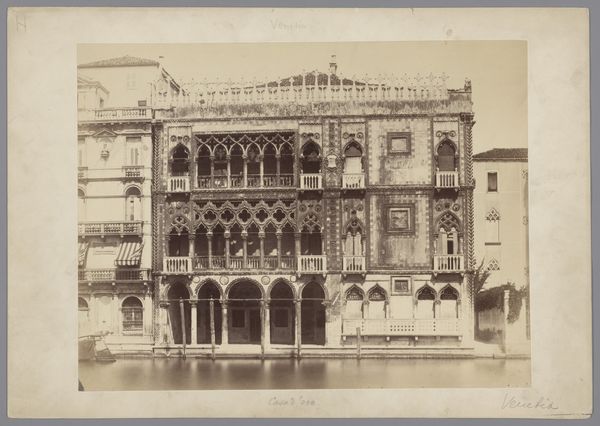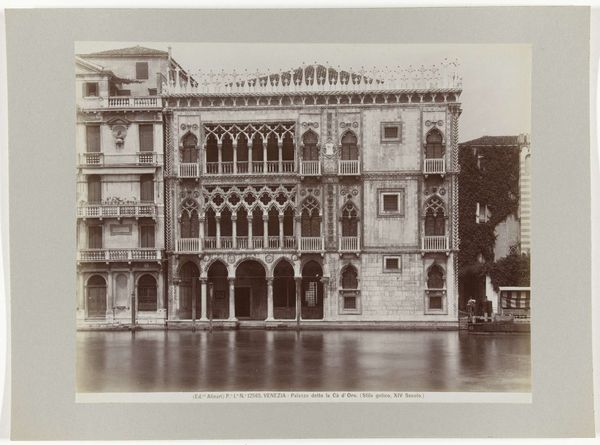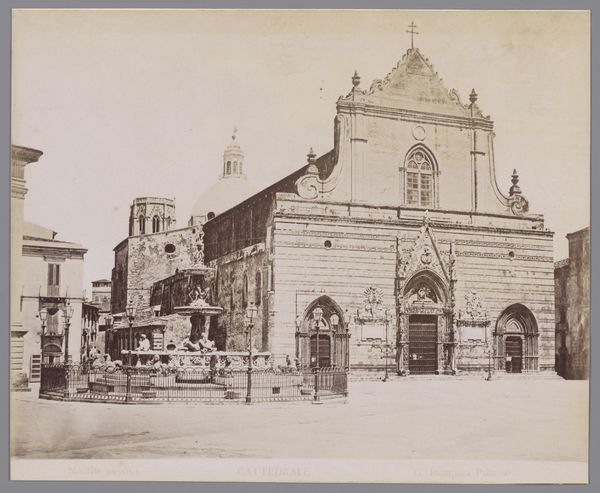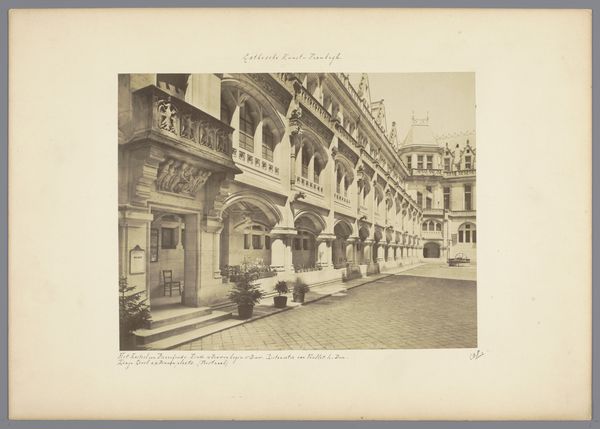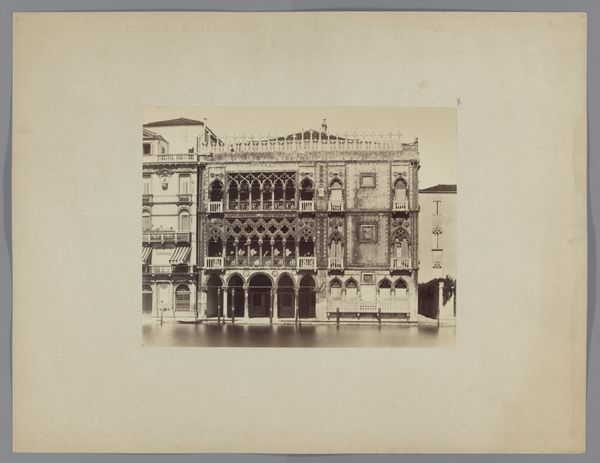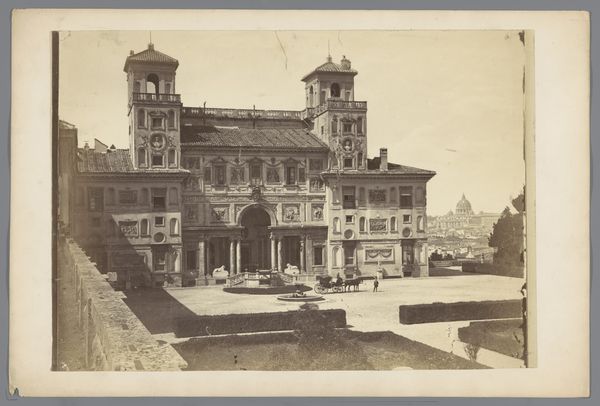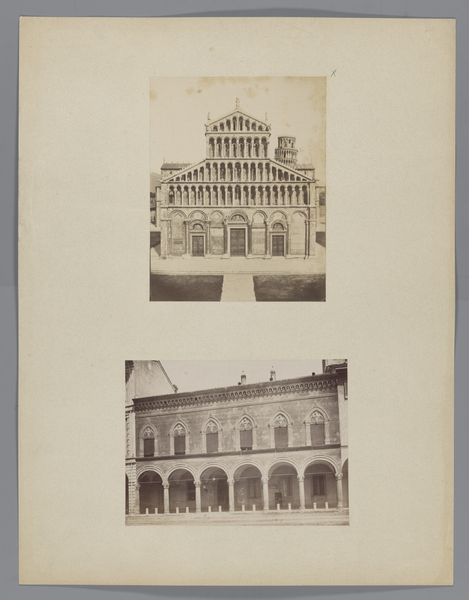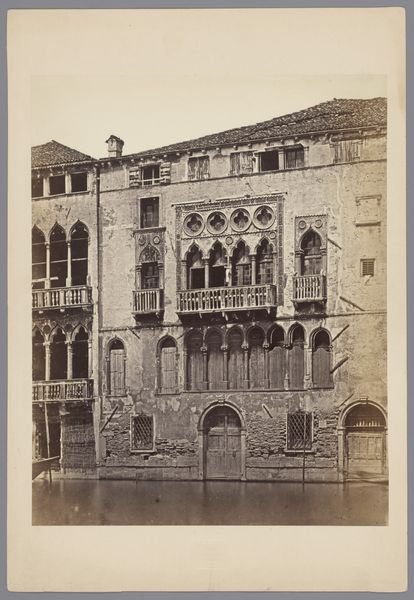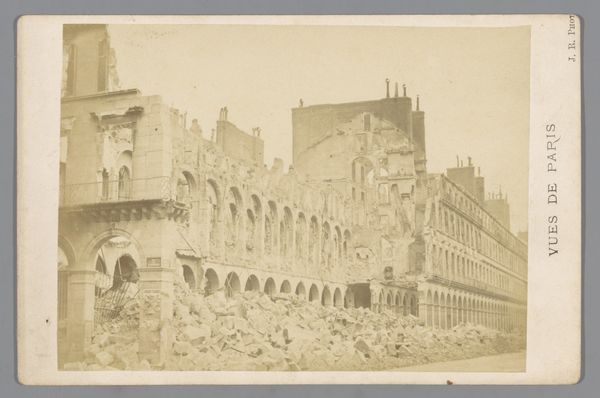
Gezicht op de westgevel van de kathedraal te Ferrara en een markt op het plein, Italië 1865 - 1907
0:00
0:00
photography, site-specific, albumen-print
#
landscape
#
photography
#
site-specific
#
cityscape
#
italian-renaissance
#
albumen-print
Dimensions: height 213 mm, width 270 mm
Copyright: Rijks Museum: Open Domain
Curator: The albumen print we're viewing, captured between 1865 and 1907 by Fotografia dell'Emilia, presents a "View of the west facade of the cathedral in Ferrara and a market in the square, Italy". It’s a striking depiction of urban life juxtaposed against monumental architecture. Editor: My first impression is that it captures a moment frozen in time. The sheer scale of the cathedral is humbling, while the market activity below offers a contrasting layer of earthly, commercial life. The contrast of tones adds depth and the photo possesses a nice historical mood. Curator: It’s intriguing to consider how the presence of the cathedral, this towering symbol of religious and civic authority, shaped the spatial organization and social interactions of the marketplace. These vendors relied on a space literally in the shadow of a place of immense power and wealth, what we now consider "high architecture." Editor: Absolutely. And the decision to include the market isn't just about documentation; it reveals a socio-political commentary on the cathedral’s impact on the urban fabric and people’s livelihoods. It makes me consider how the church affected everyday commerce and cultural interactions within the community. I also see it now that there seem to be tents for workers building the market that add more layers to my intial thoughts. Curator: The materiality of albumen printing itself is crucial here, and the process was popular during the mid-19th century, using egg whites to bind the photographic chemicals to paper, which accounts for the depth of tone we observe. This artisanal production method suggests an intent on creating an object of inherent worth beyond simply recording visual data of Ferrara. Editor: So you are indicating that the means by which the image was created impacted how we may understand the message? Curator: Precisely. Further it is essential that one studies what equipment was used, including both lenses and cameras, when assessing the value of photography, as that impacts how light behaves in the photograph, affecting image clarity and perspective, which may also distort the reception and use of the image. Editor: Well, for me, this albumen print has brought to light not just the historical Ferrara landscape, but how photographs, beyond their aesthetic qualities, actively participate in constructing historical and cultural narratives, in part, by what information they purposefully do, or do not, include. Curator: I agree completely. Examining the confluence of the artistic and material properties that construct this visual piece of art has altered my awareness of not only its content but how its reception would have been originally impacted, furthering an historical, but grounded view of a particular period.
Comments
No comments
Be the first to comment and join the conversation on the ultimate creative platform.
